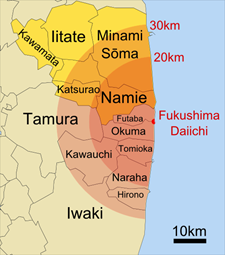March 11, 2011, Japan was hit with its most powerful earthquake in recorded history. The epicenter was 70 miles off the northeastern coast of the Japanese island of Honshu. The earthquake registered at an unprecedented 9.1 on the Richter scale. The earthquake was so powerful that it shifted the island 2.4 meters east, and increased the earth’s rotation so a day was 1.8 microseconds shorter. If the trauma from a powerful earthquake wasn’t enough, Japan was faced with a subsequent tsunami.
The cities of Miyako and Fukushima were devastated by a wave reaching 40 meters high and reaching an acceleration of three times earth’s gravity. The earthquake and tsunami reported more than 20,000 people dead or missing with and quarter million displaced from their homes. The total damage was estimated to be about $360 billion.

March 11, 2011 was not only marked by natural disasters, but also included the largest nuclear meltdown since Chernobyl. This is the only other event in history to have been classified as a level 7 classification by the International Nuclear Event Scale with Chernobyl. The Fukushima Daiichi Nuclear meltdown tested the limits of modern societal safety in a developed country.
Following detection of the earthquake, all four nuclear fission reactors commenced reactor shut down. However, due to electrical failure the generators cooling the already heated reactors (decay heat) were not functional. As a result, backup emergency generators in the basement of the facility went online. At this point, the city of Fukushima was hit with the massive tsunami, where the wave breached the sea barrier and entered the basement of the facility. This flooded the emergency cooling generators and three of the nuclear reactors overheated. The overheated reactors resulted in a nuclear meltdown and three massive hydrogen explosions.
The aftermath of the events is still not fully realized. However, there is an ongoing controversy regarding the adverse health effects of the meltdown. Only one cancer death has been attributed to the radiation of the catastrophic event, yet it is estimated that over a thousand individuals died due to cancer related causes. Furthermore, the World Health Organization (WHO) determined that infants in the region had a 1% increase in lifetime risk of developing cancers of all types. As of 2015, 137 developing thyroid cancers were identified that may be attributed to the Fukushima meltdown.
Chernobyl and Fukushima have shown vital flaws in nuclear safety. With the construction of new nuclear power plants, these disasters have given insight into how engineers need to tackle not only system failures but also mother nature.
Peer Edited by Gabrielle Dardis